17 January 2014
This is my first time camping at a small, remote field camp in the Antarctic. As I said in a previous post our camp consists of 6 tents and 4 people (myself, Melissa, Ben, and Suz). Melissa and I are flying unmanned aerial vehicles to collect data about the vertical structure of the atmosphere.
Ben was responsible for installing the two Snow Web AWS I discussed in my previous blog post. He will return to Scott Base as soon as a Twin Otter flight can get to us.
Suz is a mountaineer with the US Antarctic Program and she was responsible for helping us get across the shear zone safely and helping us run the camp. She has lots of field experience and I’m learning a lot from her about how to run a safe and efficient field camp.
We each have our own sleep tent and it is nice to have a bit of personal space, which is something that is always at a premium in Antarctica. We’ve built snow walls on the upwind side of each tent to provide some shelter in case we get strong winds blowing across the wide open ice shelf. We’ve also been very careful about securing our tents with lots of snow anchors and ropes. The last thing we want is to have a tent blow away.
Inside the tents we have our clothes and other personal items. We also have two foam pads and an air-filled thermarest pad separating our heavy sleeping bag from the cold tent floor.
The temperature in our tents has ranged from near freezing to almost 50 F when it is sunny. There is also a large temperature gradient from the bottom to the top of the tent, with the tent floor always being close to freezing since it is sitting directly on the snow. Since we are living in a snowy environment it is impossible not to track snow into the tent, which of course would then melt from our body heat. To try and keep my sleeping area dry I’ve put my sleeping bag as far from the tent door as possible. I then take off my snowy boots while my feet are still sticking out of the tent door. The boots and my outer wind pants and parka get stored next to the tent door so that any snow stuck to these outer items of apparel won’t get my sleeping bag wet.
We spend most of our day in the large Arctic Oven kitchen / work tent. Half of the tent is setup as a kitchen with a table, propane stove, utensils, and boxes of food. The other half of the tent is setup as a work area. We are using the two large shipping crates used to ship our science cargo to Antarctica as work tables. We also have four folding camp chairs in the tent. Space is definitely at a premium in this tent but we are doing a good job of sharing the limited space. Outside of the Arctic Oven tent we have a small gas generator that provides power for our laptop computers and to charge the batteries used to power the UAVs.
Melissa and Suz did a great job getting food from the McMurdo food room for our camp. So far we’ve had oatmeal and chocolate chip pancakes for breakfast. Lunch has mainly been snack foods – crackers, peanut butter, bagels, or trail mix. For dinner we’ve brought a mix of freeze dried backpacking meals, frozen food, and things like pasta. The food in camp has been better than what we eat in McMurdo. I suspect this is because we can choose what we eat each day and because we are only cooking for 4 people instead of almost 800 people.
The bathroom tent consists of a plastic bucket with a toilet seat on the top. All of our solid waste goes in the bucket and has to be brought back to McMurdo where it will be shipped off of the continent and incinerated. Our liquid waste (both human and from the kitchen) goes into a “pee hole” in the snow behind camp. We also keep pee bottles in our tent so that if we need to go to the bathroom in the middle of the night we don’t need to get dressed and go outside to the bathroom tent or pee hole. We don’t have any easy way to take showers or clean ourselves while here. Washcloths and baby wipes are about as close to a shower as we can get here. I’ve found out that baby wipes do not hold up well when being used to wash a face with a week’s worth of stubble – I guess my face isn’t as smooth as a baby’s bottom anymore 🙂 The bathroom facilities are definitely the least appealing aspect of camp life and I’ll spare you any photos of the “facilities” we do have here.
We stay in contact with McMurdo Station using either Iridium satellite phones or a large high frequency radio. We are required to check in with McMurdo every day. If they don’t hear from us they will launch the search and rescue team to make sure that we are alright so it is really important that we don’t forget to make our daily radio check. We can also use the Iridium phones and a modem to connect to the internet but the speed of that internet connection is very slow and we get transfer speeds of only a few hundred bits per second. It takes several minutes to download just a few simple text e-mail messages. Despite being so slow it is a nice way to stay in touch with our families back home and to let them know that is all is well with us and to make sure everyone at home is doing alright.
The weather has been good so far. We’ve had the full range from completely clear sunny skies to overcast conditions with fog and very little visibility. This site is generally fairly breezy and most days the wind blows about 10 to 15 mph, although this evening as I’m writing this it is almost calm out. The temperature has been mainly in the 20s F although when the wind dies down and it is sunny it is quite comfortable to be outside. We did receive a forecast yesterday to expect strong winds over 50 mph but those never materialized. As a fan of exciting weather I’m hoping we see at least one good storm while we are here.
I’ll end with a photo of “myself” and the flat expanse of the Ross Ice Shelf taken at midnight as the sun dipped to it’s lowest point of the day.
Thanks for reading.
John

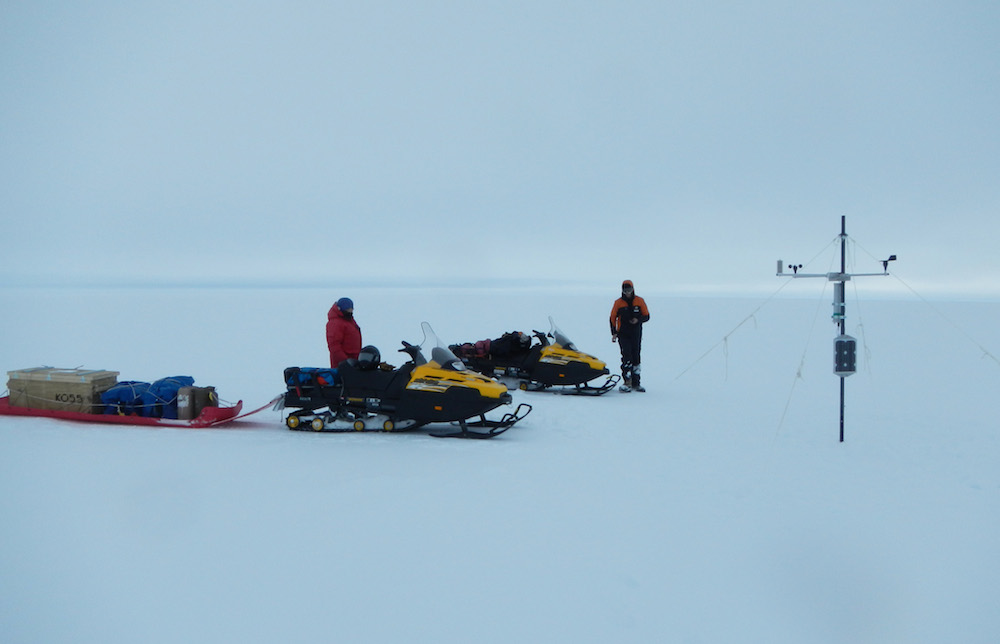
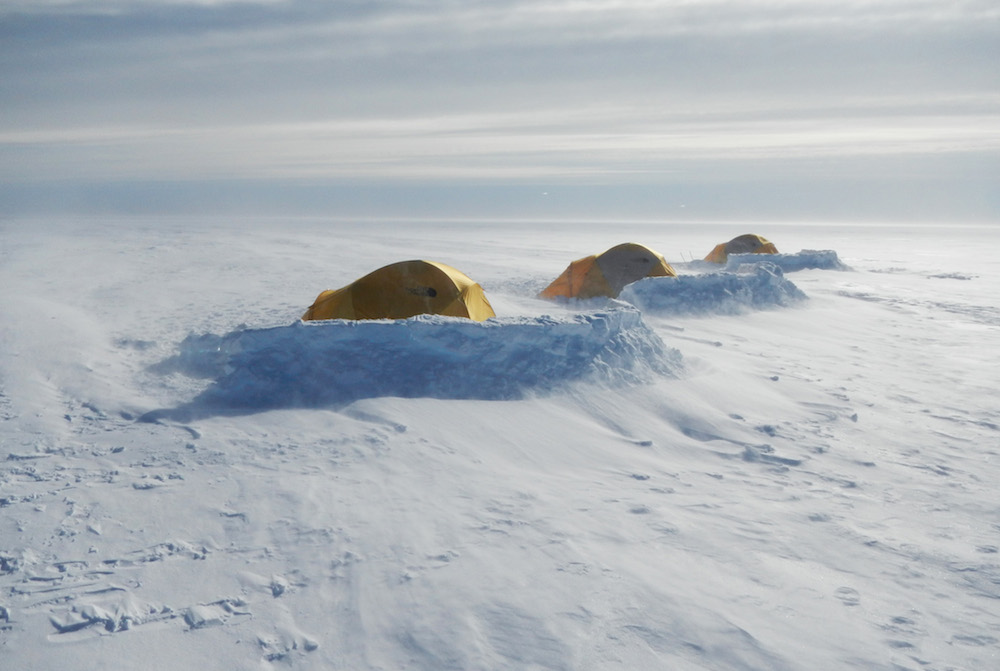
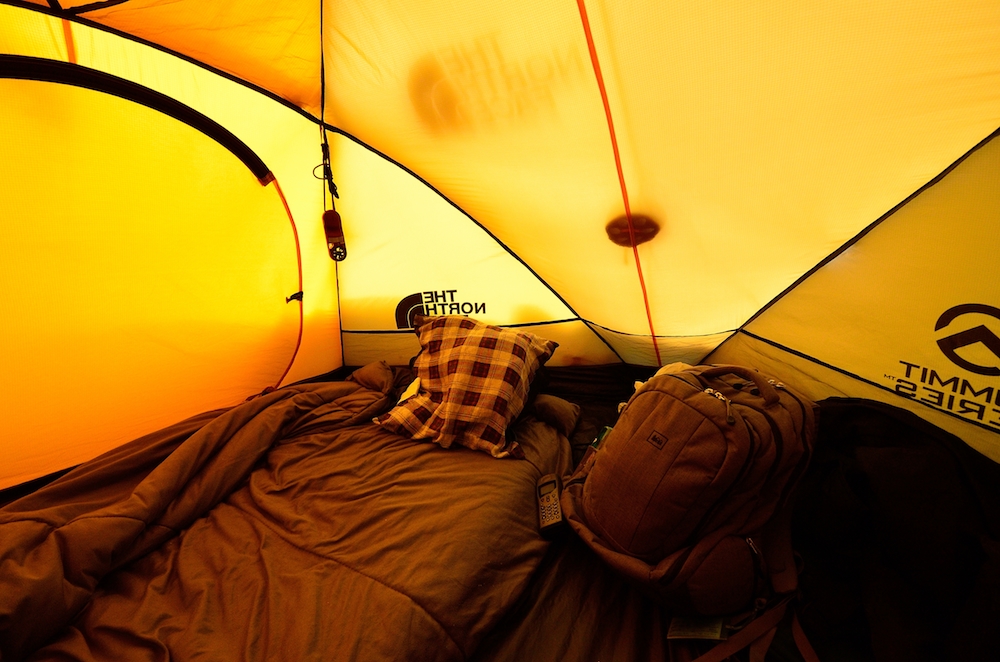
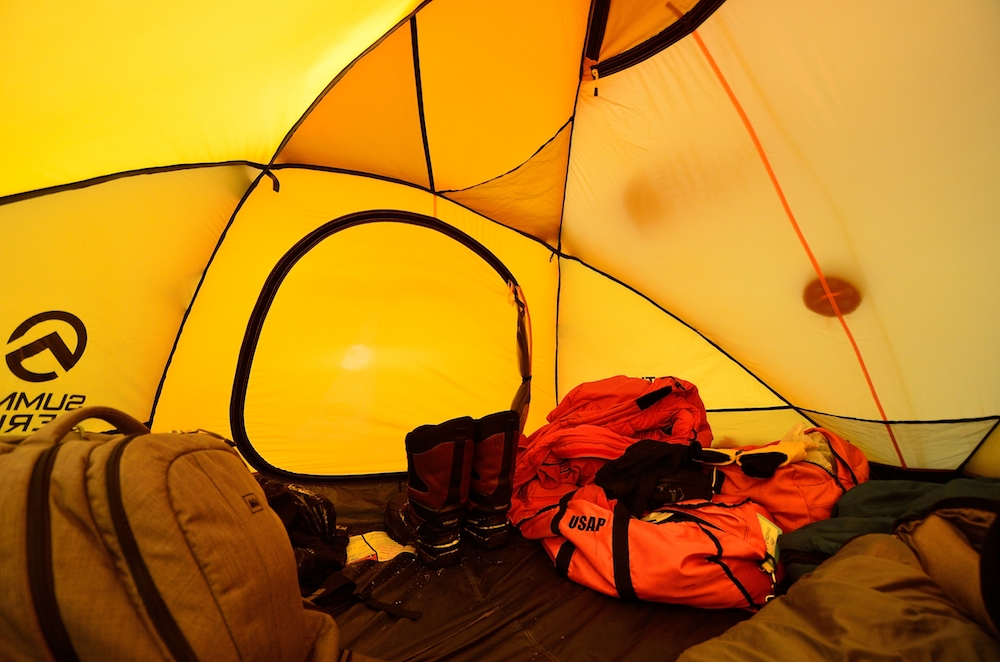
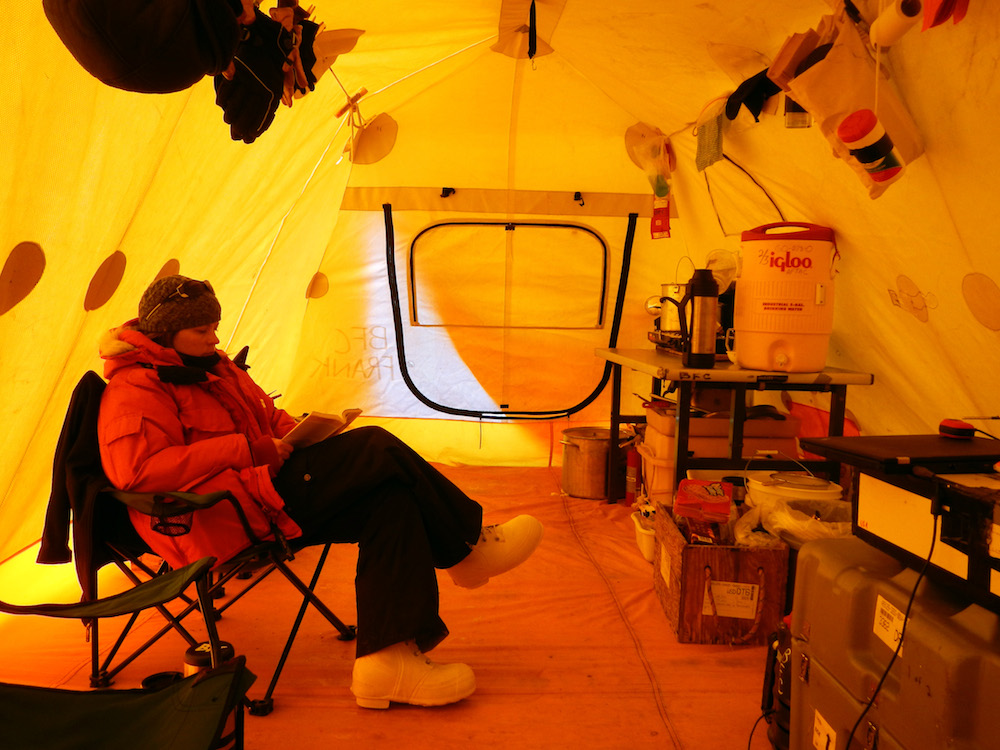
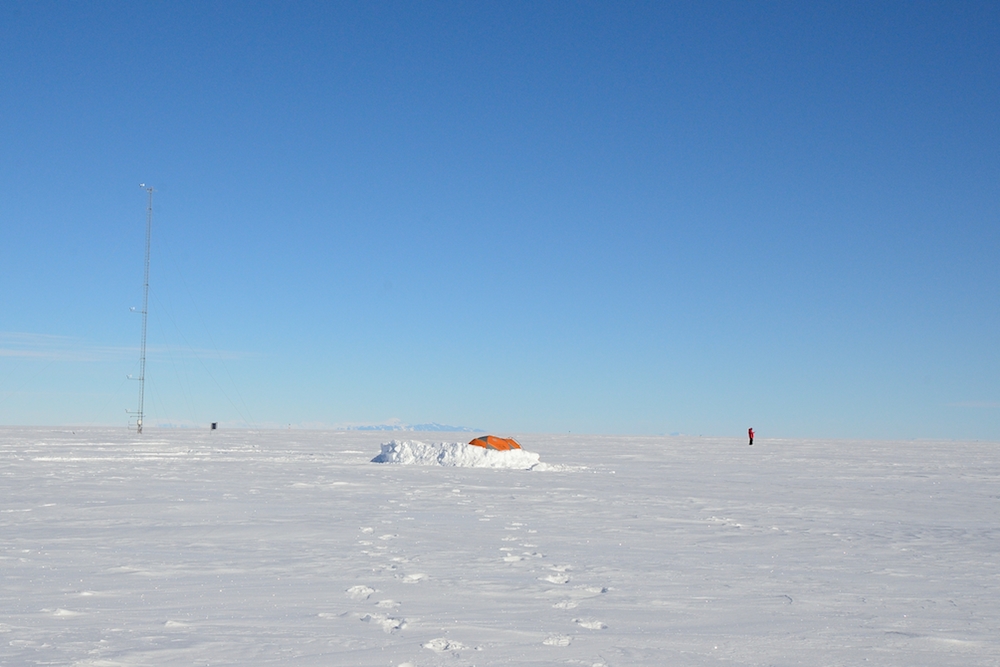
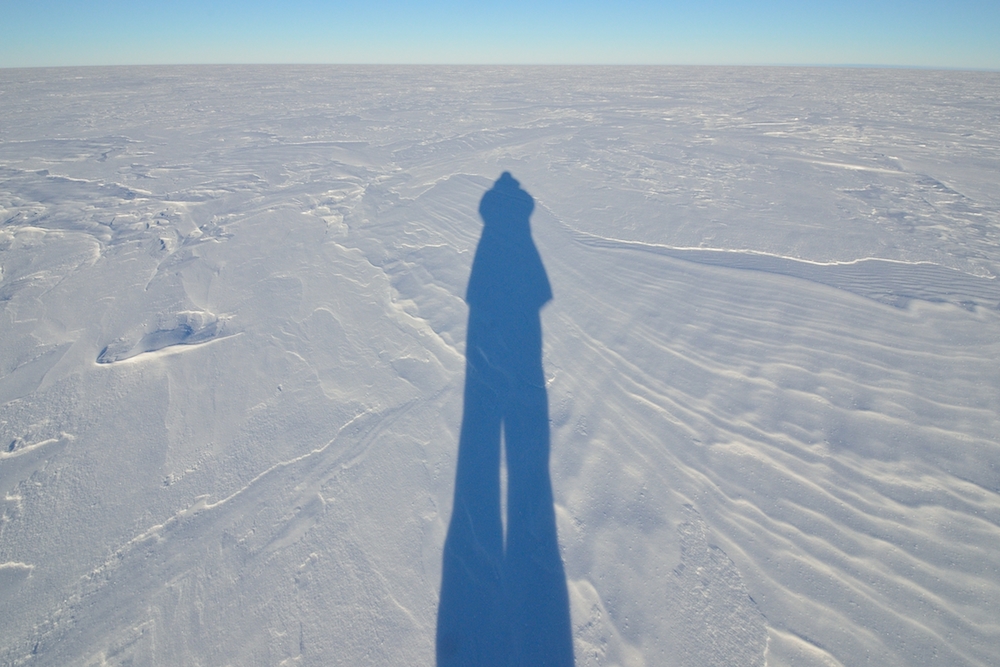

Hey John, glad you got the SUMO assembled ok and flying. What an adventure. Congrats!